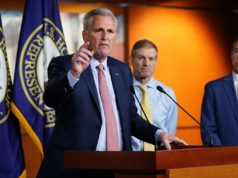
Last week, the House of Representatives passed the “HONEST Act,” which prohibits low-quality research from influencing the health and environmental policies of U.S. Environmental Protection Agency (EPA). By most measures of recent media coverage, you would think the scientific community stands monolithically against it.
It’s an odd position, considering the bill requires the EPA to employ only “the best available science” when informing future regulatory actions. Eligible studies would be limited to those with publicly available data published in a manner “sufficient for independent analysis and substantial reproduction of research results.” The bill improves upon earlier versions by exempting personally identifiable information and trade secrets from the transparency requirement.
ADVERTISEMENT
At its most fundamental level, the HONEST Act aims to address the “reproducibility crisis” currently plaguing professional research.
Reproducibility, or the ability to duplicate an experiment and achieve similar results, lends validity to the scientific process. To paraphrase science reporter Trevor Butterworth, we can be certain our cars will start every morning because the laws of internal combustion are unchanging observations of the natural world.
By current estimates, somewhere between 65 and 90 percent of academic literature does not meet this standard. And some argue that the science underpinning EPA policy is so invalid, the agency’s car no longer starts
The HONEST Act echoes the scientific community’s call for open access. The most prestigious academic journals lock research findings behind expensive paywalls, and virtually none publish the accompanying raw data. The current climate makes it exceedingly difficult for one laboratory to confirm or disprove the findings of another.
To make matters worse, many people may be surprised to find that the EPA doesn’t own, nor does it even have access to, much of the data justifying its most impactful regulations. The trouble stems largely from EPA research grants, which don’t currently require researchers to release the totality their findings to the federal agency.
EPA staff admitted to their meager access to information after being unable to produce raw air pollution data requested under a 2013 Congressional subpoena. Part of the data in question belonged to Harvard University, where researchers tied air pollution to deaths in six U.S. cities. Since its publication, the study has supported upwards of $65 billion in regulatory oversight.
That this particular data is “held solely by… outside research institutions” and never scrutinized by their funding agencies is troubling, to say the least. Policy shouldn’t be based on secret data, especially as professional science wages a very public war against unreliable studies.
The Harvard study wasn’t an anomaly. In the past 5 years, the EPA awarded more than 750 research grants to advance our knowledge of subjects, including air and water quality, climate change, and chemical safety. If none of the resulting studies can be validated, our foundation of knowledge is a lot less stable than we think.
The HONEST Act’s critics argue that the EPA won’t be able to issue any new regulations under the bill’s strict standards. The assertion would be laughable, if not for the disturbing implication that the EPA can only function when it uses sub-par data.
In reality, “reproducibility” does not mean staging a second oil spill to corroborate the impact of Deepwater Horizon. But it does mean collecting a robust and extensive library of data, and allowing other scientists to gauge how strong of a correlation that data may have with their own. Grant guidelines could be modified to ensure open access by EPA staff themselves, and independent researchers. Faulty methods and human error deserve to be uncovered.
Consider the following hypothetical: A handful of studies tie “Chemical X” to asthma, so the EPA swiftly bans it from production. Without data transparency, we can’t know whether researchers evaluated all possible variables – perhaps “Chemical Y” was the true culprit. While bureaucrats pat themselves on the back for shutting down American industry and the jobs dependent on it, the health burden of “Chemical Y” persists.
As the HONEST Act advances through the Senate, it is imperative that our elected officials continue pushing the EPA to uphold a higher standard. Our businesses, our health, and our environment demand it.
Dr. Joseph Perrone is the chief science officer at the Center for Accountability in Science.
The views expressed by this author are their own and are not the views of The Hill.







